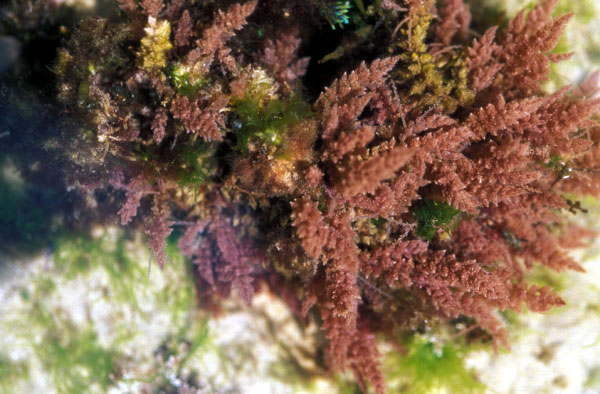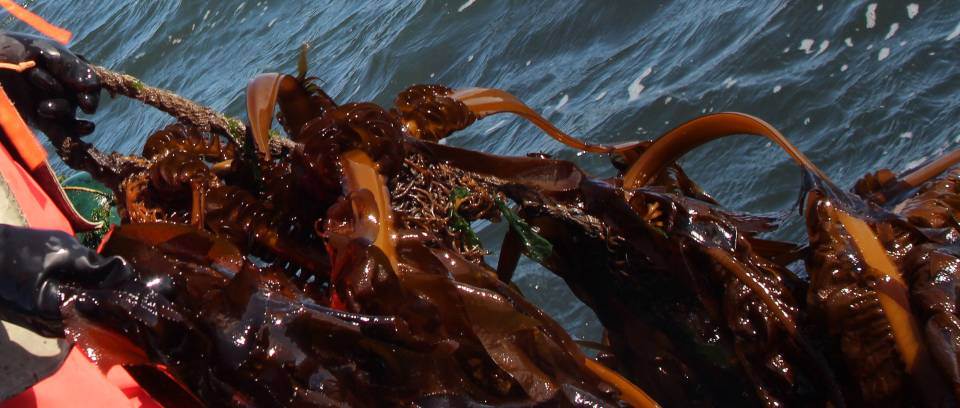Kappaphycus is one of the most significant, economically valuable red seaweeds, cultivated in tropical and subtropical waters. This alga demands a relatively high market value globally, due to applications of the kappa carrageenan colloid that is industrially extracted from the biomass. Carrageenan is widely used in food, pharmaceuticals, and nutraceuticals and for aquaculture applications. The first successful commercial cultivation of Kappaphycus (previously called Eucheuma) was recorded from the southern Philippines in the late 1960s using the line and stake method. Dramatic production increases were achieved, with the Philippines being the leading producer of Kappaphycus for more than 30 years, until it was overtaken by Indonesia (in approximately 2008). By 1988, Kappaphycus farming became widespread in Indonesia, and efforts have been undertaken to spread Kappaphycus farming to more than 30 countries worldwide. Since 2008 Kappaphycus production steadily rose in Indonesia, but production from the Philippines has tended to decline since 2011. Research and development (R&D) initiatives focusing on Kappaphycus in the Philippines emphasized the means to increase productivity and solutions to issues causing declining production. R&D focusing on Kappaphycus cultivars in the Philippines was made through the National Seaweed R&D Program. Several institutions and research centers took major steps to achieve these objectives. There were significant and relevant results obtained in studies of molecular taxonomy, factors affecting sporulation, tissue culture and mutagenesis, protoplast isolation, strain selection, mitigation of ‘ice–ice’ malaise and Neosiphonia infestations. A recent development in Kappaphycus farming was the discovery that use of an extract from a brown seaweed acts as a biostimulant to improve tolerance of cultivars to abiotic stresses. Problems and challenges encountered in the production of Kappaphycus, even after more than 40 years of farming, but which needed to be overcome, are discussed.
Digital library
-
-
In recent years, several indicators have been proposed to assess the effect of human activities on ecosystems provisioning capacity. Some of these methods focus on the Net Primary Production (NPP) available for ecosystem functioning through the comparison between the Human Appropriated Net Primary Production (HANPP) and the ecosystem's initial NPP at a given reference year. While some approaches have been proposed for marine ecosystems, most of the HANPP studies focus on terrestrial systems. This study highlights the relation between the HANPP methods and the production of natural resources in marine ecosystems. The linkage between current overfishing and future fish provisioning (ecosystem service) is well known. However, less studied before, is the relation between seaweed aquaculture and fish provisioning through the marine food web. Seaweed growth requires nutrients and light that will consequently be no longer available for natural phytoplankton production. As seaweed is periodically harvested, a fraction of the ecosystem's NPP (HANPP) is no longer available for ecosystem production. The HANPP of aquaculture reduces the ecosystem carrying capacity and thus affects commercial fish stocks. Therefore, an integrative approach is proposed in this study to assess the potential effect of seaweed farming on fish landings in the Greater North Sea. Three indicators are proposed to assess the Lost Potential Yield (LPY) in fish landings: LPYB, LPYV and LPYE, accounting respectively for reduction in biomass, monetary value and eco-exergy. For these three aspects, the LPY results remains smaller than the seaweed production, meaning that the overall natural resources balance for seaweed farming is positive.
-
Uses of Seaweeds
- Food
- Feed
- Fertilizer
- Medicine
- Cosmetics
- Textile
- Paper
- Leather
- Major sources of phycocolloids (alginates, carrageenans & agars)
- Biofuels
-
More that 30% of Ireland’s farmed salmon production comes from Class 3 offshore sites. In northern Europe, Irish salmon farmers have pioneered finfish production in these sites, with a wave height of 1 – 2 m and moderate exposure to the full rigors of the North Atlantic Ocean’s winter weather. The experience, gathered over 30 years of operating in this harsh environment, has led to developments in cage design, feeding technology, and husbandry practice. More recently, offshore cage farming has developed in the Mediterranean, where the culture of sea bass, sea bream, and bluefin tuna occurs in offshore sites in a number of countries.
-
We provide detailed rearing methods and describe green sunfish (Lepomis cyanellus) gonadal development and histological differentiation for both sexes. Developing in-depth aquaculture protocols and describing the gonadal differentiation of green sunfish could facilitate strategies to control nuisance populations, enhance stocking programs, and provide information for this species' use in bioassay trials or toxicology studies. Our methods resulted in consistent year-round production of green sunfish and allowed us to identify the timing of their gonadal differentiation through histological assessment. Our spawning methods provided year-round volitional spawns from green sunfish broodstock. Our rearing methods involved weaning larval green sunfish off live nauplii and onto only artificial diets by 37 days post-hatch (dph). Most of the offspring generation reached sexual maturity by 213 dph. Green sunfish are gonochoristic, with testes and ovaries differentiating directly from un- differentiated gonads. Ovaries begin to differentiate by 39 dph and testes begin to differentiate by 69 dph. This information can provide biologists consistent means to produce this Centrachid and understand their gonadal development.
-
For rapid growth and appropriate pigmentation,Porphyra requires the constant availability of nutrients, especially in summer when temperate waters are generally nutrient depleted. Cultivation near salmon cages allows the alleviation of this seasonal depletion by using the significant loading of fishf arms, which is then valued (wastes become fertilisers) and managed (competition for nutrients between desirable algal crops and problem species associated with severe disturbances). Porphyra,being an extremely efficient nutrient pump, is an excellent candidate for integrated aquaculture for bioremediation and economic diversification. Frequent harvesting provides for constant removal of significant quantities of nutrients from coastal waters, and for production of seaweeds of commercial value. The production of P. yezoensis being limited in the Gulf of Maine, an assessment of the potential of seven native north-west Atlantic Porphyra species is presently in progress. To enable the production of conchospores for net seeding, the phenology of these species and the conditions for their vegetative conchocelis exponential growth, conchosporangium induction, and conchospore maturation were determined. The development of integrated aquaculture systems is a positive initiative for optimising the efficiency of aquaculture operations, while maintaining the health of coastal waters.
-
Eucheuma cottonii is a red algae, which is cultivated mainly in Philippines, China, Indonesia and Hawaiian islands and carrageenan is the main product extracted from it. In Sri Lanka currently Eucheuma cottonii is cultured within the coastal belts of Jaffna, Kilinochchi and Mannar. Aim of the present study is to determine the best mesh size of the enclosures (cages) to be used for cultivation of E. cottonii and to identify the species which are inhabiting in association of the this sea weed cultured within the coast of Dondra, Matara, in Sri Lanka. Daily growth rate of E. cottonii was determined and it's carrageenan yield was determined after culturing the seaweed (initial seedling weight 155.67±4.53g) in baskets having three different mesh sizes 1x0.8 cm 2 (M1), 2.2x1.8cm 2 (M2) and 3.5x2.8cm 2 (M3). Three replicates were used for each mesh size and culture programme was carried out for 64 days. Once a week the wet weight of E. cottonii each basket and the salinity, pH, temperature, dissolved oxygen (DO), Total Dissolve Solids (TDS) and conductivity in the site selected for the culture programme were recorded. Extraction of carrageenan in the seaweed grown in each basket was extraction by using KOH as a solvent. Dried Eucheuma cottonii sample (10.00 g), soaked in distilled water was introduced in to a beaker containing 500.0 mL of 0.5M KOH solution and was heated up to 850Cwhile stirring for 45 minutes. The extraction was precipitated in 90% ethanol for 30 minutes and it was dried by using an oven at 600C, until it recorded a constant weight. Final wet weights of Eucheuma cottonii in each basket were recorded and they were 592 ± 92.45, M3 408.66 ± 189.74 and 397.66 ± 109.86 g in M1, M2 and M3 respectively. Highest wet weight (600±90.9340 g) of Eucheuma cottonii was recorded in one of the baskets with M1 mesh size after 56 days of culture. There were no significant difference (p>0.05) among the final weight of the sea weed cultured baskets with three different mesh sizes. Highest daily growth rates (6.316±1.0282 % Day-1) was during the initial phase of the culture period in M2 basket and it decreased towards the final phase of the culture period. Carrageenan yield showed significant difference (p≤0.05) among the baskets with different three mesh sizes, with highest (71.7667±0.32) in M3 and the lowest (47.1667±7.23) in M2. Isopods, shrimp juveniles, crab larvae and fish larvae were identified in all the buckets while coral reef fishes,
-
Distributions of dissolved nutrients and particulate matter downstream from a ma- rine fish farm at the Norwegian coast were examined. The samples were taken on transects from 25 m to 215 m distance to a specific fish cage. The samplings were carried out repeatedly while there was fish in that cage and once, after the fish were taken out. The outflow from a fish cage was estimated and a time series of current velocities was recorded downstream from a fish farm. The concentrations of nitrate, nitrite and phosphate were at very low levels and did not reveal any dependence on the distance to the fish cages. An influence of the fish farm on nutrient levels was only visible in the ammonia concentrations, which ranged around 15 μg NH4-N · l−1 on average and showed heavy fluctuations along the transects. Seaweed profits from higher ammonia concentrations in general, but enhanced growth in the study area would be limited by phosphate. On average, the concentrations of total particulate matter and particulate organic matter were at low levels, but showed an increase from 20.04.2005 to 02.06.2005 and a decrease after the fish were taken out of the net cage. This may have reasons other than the clearance of the fish cage, as an effect of the discharge from the cage on the concentrations of particulate matter within more than 50-60 m distance is highly unlikely. The fraction of organic matter was on high levels around 80% throughout the whole period of the study and did not show any dependence on the distance to the fish farm. Structures were found in the wake of a fish farm, that indicate the existence of eddies or swirls in the flow. It is very likely, that a vortex street develops downstream of a net cage, which would be associated with a recirculation area close to the cage. Such a wake characteristic might suppress the horizontal spreading of particles leaving the cage. A net outflow out of a fish cage was found from 3-23 m depth, which indicates the existence of some internal force. This might well be generated by fish swimming in circles. Fish behaviour, therefore, might play a role in the spreading of particles, as already small changes in the strength of the outflow might change the characteristics of the wake flow.
-
Offshore cultivation of marine macroalgae is a potential sustainable resource for fuel, food, and chemicals. Offshore, the high productivity of macroalgae cultivation depends on external nitrogen supply. The current work examines the idea of supplying nitrogen for Ulva sp. cultivation in the oligotrophic Eastern Mediterranean Sea (EMS) by artificial upwelling of nutrient-rich deep seawater (DSW). Growth rates, protein, and starch contents of Ulva sp. were measured for time varying fertilizations with nitrate concentrations corresponding to nutrient concentrations of DSW at increasing depths of the EMS. A maximal relative growth rate of 7.4% was measured for fertilizing ten times per week with 5.8 μM, which corresponds to the artificial upwelling from the depth of 700 m at EMS. Protein and starch contents ranged between 1–6 and 8–15% of dry weight. Finally, yields and energetic costs of DSW pumping were modeled for an example case of 10-ha offshore farm. The model predicts a high productivity but low energetic efficiency, which can be improved by coupling the biomass production with offshore power sources such as ocean thermal energy conversion.
-
The effect of a range of chemical disinfectants at different concentration and exposure times was investigated on five macroalgal species and the marine gastropod Littorina spp. Palmaria palmata, Osmundea pinnatifida and Ulva lactuca are commercially valuable and are often cultivated in tanks for food or feed. Ectocarpus siliculosus and Ulva intestinalis are common epiphytes of P. palmata and O. pinnatifida cultures, whilst Littorina spp. are common herbivorous epibionts within U. lactuca culture tanks. These contaminants reduce the productivity and quality of the culture as a food. Differential tolerance to the treatments was seen between the algal species using pulse-amplitude modulation (PAM) chlorophyll a fluorescence, a few hours and a week following treatment. We identified treatments that selectively damaged the epiphyte but not the basiphyte species. Ectocarpus siliculosus had a significantly lower tolerance to 1 % sodium hypochlorite than P. palmata, and to 25 % methanol than O. pinnatifida, with a 1–5 min exposure appearing most suitable. Ulva intestinalis had a significantly lower tolerance than P. palmata and O. pinnatifida to many disinfectants: 0.1–1 % sodium hypochlorite for 10 min, 0.5 % potassium iodide for up to 10 min, and 0.25 % Kick-start (a commercial aquaculture disinfectant solution) for 1–5 min. No treatment was able to kill the gastropod snails without also damaging U. lactuca, although agitation in freshwater for an hr may cause them to detach from the basiphyte, with little to no photophysiological impact seen to U. lactuca. This experiment forms the basis for more extended commercial trials.





